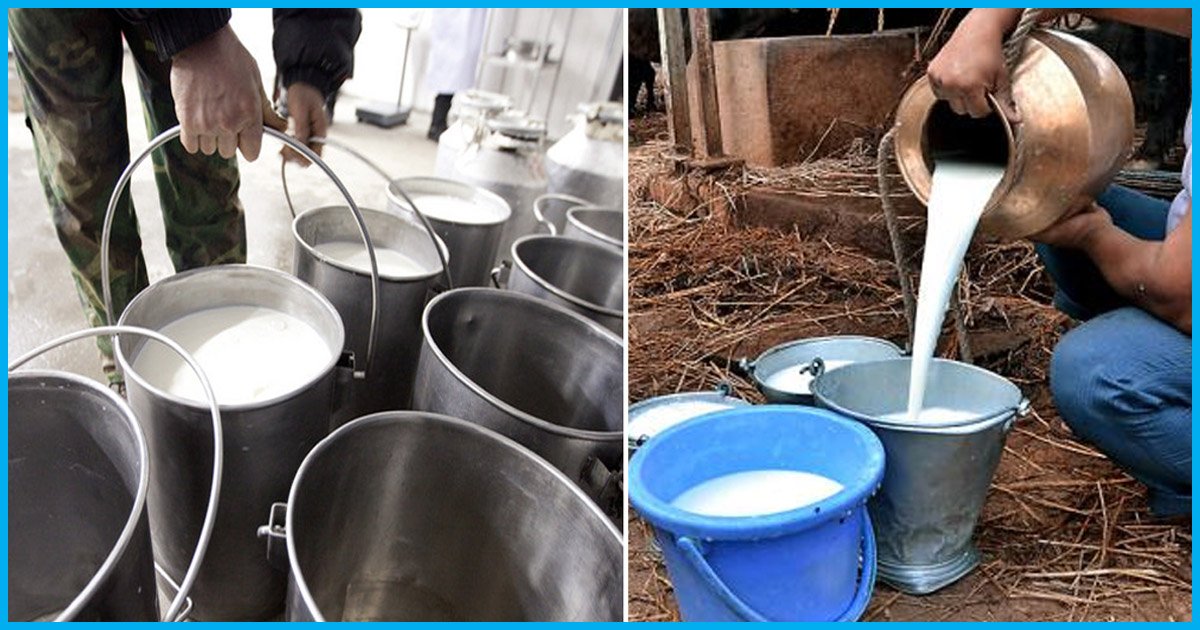
Why It Is Important To Know The Source Of The Milk That You Are Drinking?
3 May 2017 9:25 AM GMT
Sources and Nutritional content
Considered to be a complete nutrition, milk is a pale liquid produced by the mammary glands of mammals. The first milk of the mother contains colostrum which carries the mother’s antibodies to the child and protects it from diseases.
Throughout the world, there are more than six billion consumers of milk and milk products. Technically speaking milk is an emulsion within a water-based fluid that contains dissolved carbohydrates and protein aggregates with minerals. Typically, milk is extracted from cows, buffalos, goats, sheep, donkeys, horses, etc. The most preferred animal milk is of cows and buffalos. Milk consists of 85% water, protein, fat, cholesterol, and minerals.
Milk consists of 85% water, protein, fat, cholesterol, and minerals.
Interesting facts about milk
Some researchers suggest that playing music increases the production of milk by about 3%.
A few others suggest that calcium, coupled with Vitamin D, does not only benefit bones and teeth but can also provides protection against cancer, diabetes and hypertension.
A study published in the American Journal of Physical Anthropology said that the composition of mother’s milk changes depending on the sex of her child. Its nutrition differs as a male child has distinct requirements than a female child. Poorer mothers produced creamy milk for their girls, but wealthy mothers produced milk with more energy for boys. So not only is human milk different for boys and girls, it also seems to change based on social circumstances.
Another study in Sweden found that women consuming more than 3 glasses of milk a day, had almost twice the mortality over 20 years compared to those women who consume less than one glass a day.
Some scientists argue that most adults can’t stomach milk because as we grow older, the production of the enzyme lactase (the chemical that allows digestion of lactose) ceases.
Source of milk is crucial
In developed countries such as the USA, about 48 million people are infected with foodborne diseases per year. In India, the number increases manifold as we face more challenges in processing or storage of the dairy product in a hygienic condition.
Incorrect processing or storage of milk products can represent a transmission hazard for a large number of pathogens and can cause diseases like brucellosis, listeriosis, tuberculosis, etc.
Most Indians consume milk in its raw form. There are some who are of the view that this might not be the right way to consume as raw, unpasteurized milk may carry dangerous bacteria such as Salmonella, E. Coli, and Listeria – responsible for causing numerous foodborne illnesses. This can adversely affect the health of individuals and is especially dangerous for pregnant women, people with weakened immune system, and children.
Pasteurisation is the process of heating the milk at a specifies temperature for a specified time which kills most of the bacteria present, but a few scientists claim that some of the nutrients might be lost in the process. it is always safe to boil the milk from a hygienic point of view because germs can spread from the milkman or due to an infection in the udder (mammary gland of female cattle).
Mastitis is a disease which causes an inflammatory reaction of the udder tissue due to which the white blood cells are released into the mammary glands. The resulting increase in the somatic cell count can cause a decline in potassium and lactoferrin. It also results in decreased casein level, the major protein in milk.
As most calcium in milk is associated with casein, the disruption of casein synthesis contributes to lowered calcium in milk.
Chemical hazards include contaminants and residues of other chemicals that are used or added during the animal production or manufacturing processes, such as veterinary drugs, pesticides etc. In addition, some contaminants may enter the dairy chain during dairy processing and packaging or through deliberate adulteration (e.g. melamine). Growth promoters like rBST, a hormone used to increase milk production may remain in the milk or the meat. Not only basic measures like use of pasteurised milk, avoiding homemade cheese, and respecting the cold-chain for milk-based products should be followed but also other measures in the dairy industry like testing for any clinical infections or open wounds is required in workers who come in direct or indirect contact with the milk.
The personnel is also required to wear face masks and hair covers and to use hand sanitizers every half hour or at regular intervals.
The aim should be proper utilisation of resources for efficient management of dairy products so that the hygiene and the nutrition can be maintained.
The Logical Indian urges the government to properly engage with all stakeholders to establish national controls and standards, including inspection and surveillance.
 All section
All section













